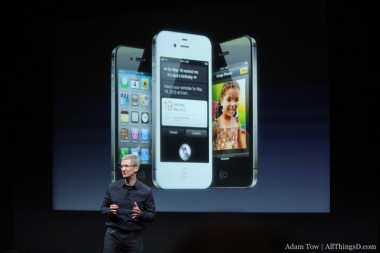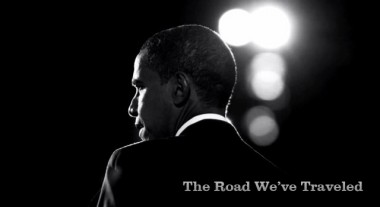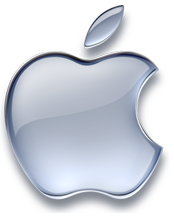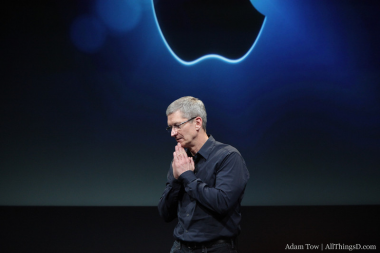
Who in their right mind would lie to Ira Glass?
That was my first reaction to the revelation that the theatrical monologuist Mike Daisey had lied or fabricated — or in his words, “taken dramatic license” with — certain parts of his stage play, “The Agony and the Ecstasy of Steve Jobs.”
When I met people at parties in recent weeks and told them that I write about technology and that I had devoted more than a decade to covering Apple, the first question I used to get was: “Did you know Steve Jobs?” Since about January of this year, that first question has become, “What do you think of Mike Daisey?”
I haven’t had a real answer. I hadn’t seen his show, which was
favorably reviewed by the New York Times, nor had I heard the episode of the highly respected public radio documentary program “This American Life” titled “
Mr. Daisey and the Apple Factory,” that had been adapted from his play.
The show — or shows — hit a cultural nerve at a critical moment. Apple is the biggest company in the world, sporting a market capitalization of $546 billion as of Friday, with $100 billion worth of cash and investments on its balance sheet and the most popular stable of consumer electronics products in the world, especially the iPhone and the iPad. All of them are manufactured by workers in China, who labor for wages that are low by Western standards, put in hours that by Western reckoning are long, under conditions that to Western eyes aren’t ideal, doing jobs that by any standard are incredibly tedious.
Daisey’s stage show, which became a sensation among New York’s chattering classes, sought to draw attention to the plight of allegedly oppressed workers at Foxconn, Apple’s manufacturing partner in China. As New York Times reviewer Charles Isherwood put it, the play “is a mind-clouding, eye-opening exploration of the moral choices we unknowingly or unthinkingly make when we purchase nifty little gadgets like the iPhone.”
The stage show had been adapted for radio on public radio’s “This American Life,” which is probably the most-respected radio documentary program in the history of broadcasting. And the Daisey episode was presented as documentary, meaning the radio show’s staff of journalists and producers were vouching for it being true.
The problem: Much of it wasn’t.
In the show, Daisey described a trip to China, as well as a visit to Foxconn’s outer gates and other manufacturing companies in Shenzen, where many are located. He delivers a detailed and emotionally riveting account of meeting girls as young as 12, 13 and 14 years old who claimed to work for Foxconn. This would be in violation both of local laws and of Apple policies.
He also told of meeting workers poisoned by a chemical called n-Hexane, used to polish screens.
And, perhaps most movingly, he related a tear-jerking scene in which he showed a working iPad to a man who said he had crippled a hand while making its parts in a Foxconn metal press, yet had never so much as seen one of the devices powered on. Seeing the iPad’s screen in action, he tells Daisey, “is like a kind of magic.”
The word “magic” fits oddly here, because these meetings didn’t happen as Daisey said. “This American Life” yesterday aired a lengthy episode entitled “
Retraction,” documenting Daisey’s many liberties with the facts.
To help do so, a reporter for another public radio show — Rob Schmitz of “Marketplace” — did what no one else in the media seemed to be willing to do, which was subject Daisey’s claims to scrutiny. Most damning of all in Schmitz’s report was the testimony of Daisey’s translator, called Cathy. She was found — after Daisey had told TAL he had lost contact with her — and disputed many of the anecdotes taken from the play and used in the radio segment about Foxconn.
Among the fabrications: Daisey didn’t speak to quite as many people nor visit nearly as many plants as he said he did. She disputed finding underage workers. The n-Hexane poisoning incident occurred not at Foxconn in Shenzen where Daisey visited, but at a Wintek facility in Suzchou,
more than 900 miles to the north of Shenzen.
The stage show, and therefore the radio show that was derived from it, turned out to be a mixture of facts and fiction. Which might be fine for a production on the New York theatrical stage, where fiction and fact blend readily. And, while it might be okay in entertainment products, you don’t expect it from a prestigious radio documentary program.
And that is where the problems began.
When Daisey’s monologue was adapted for “This American Life,” outrage began to grow among people who wanted to do something about it. It was, Glass says, the most downloaded episode of “TAL” ever, and public radio listeners did what public radio listeners tend to do. For one thing, they started a petition. More than a quarter of a million people have
signed a petition at Change.org, inspired by the TAL production based on Daisey’s work, demanding that Apple make changes.
That includes crafting a “worker protection strategy” for new products released, as well as publishing data from Fair Labor Association audits.
Feeding the frenzy, Daisey stepped up as the leading voice for worker rights in China’s electronics industry. He was seemingly everywhere in the media. Since the TAL segment aired in January, Daisey has been seen on “
CBS News Sunday Morning,” in a report that, like the “TAL” episode, is now going to have to be retracted or at the very least walked back.
Another CBS-owned property, CNET, hosted Daisey as part of “
Reporters Roundtable,” alongside Charles Duhigg of the New York Times, co-author of a series of front page
stories in that newspaper. Duhigg ended his “Roundtable” appearance by urging people who care about the issue to go and see Daisey’s play.
Needless to say, there will have to be many more retractions in the days ahead.
At this point, it’s hard to determine what’s more outrageous, Daisey’s lies to Ira Glass and his team, or the national media’s willingness to give Daisey a platform to repeat the same lies and fabrications without making the slightest effort to vet them.
The circumstances around Apple’s manufacturing arrangements in China aren’t new. As a columnist for Businessweek I wrote about Apple’s
first round of “sweatshop” allegations in 2006, well before the age of the iPhone and the iPad, which had at the time first come to light in part because of the reporting by London’s
Daily Mail.
I’ve never been to China. Many people know more about the on-the-ground facts concerning Apple’s factories than I do. But there are many reporters who have been there. In 2010, Bloomberg Businessweek’s Fredrik Balfour wrote a powerful cover story for that magazine, which aimed to
get to the bottom of the string of suicides that occurred among Foxconn employees that year.
ABC’s
“Nightline” visited Foxconn earlier this year. Its report was criticized in some circles, because at the time of his death, Apple’s late CEO Steve Jobs happened to be the largest shareholder of that network’s parent company, Disney. Also, ABC had been invited by Apple and Foxconn. Even so, “Nightline” anchor Bill Weir, seeing conditions very different from what Daisey described in the course of his reporting, wondered if Mike Daisey’s work was
questionable.
At the very least, Daisey is a dramatist who now admits he chose to lie, but for reasons known only to himself. The chance to raise his profile and sell more tickets to his monologue are obvious potential motivations. Whatever it was, his dramatic product is meant to be consumed as thought-provoking entertainment, not as fact-based journalism, which many people assumed it was.
This is the crux of Daisey’s defense for lying to Ira Glass and his fact-checker: That he’s not a journalist and took dramatic license with the events, and now regrets doing the “This American Life” segment.
And that’s the real shame here.
Clearly, people care about how workers who make our electronics are treated, or there wouldn’t have been a market for Daisey’s show, or for an hour-long radio documentary adapting it. And the subject is one we need to discuss at length as a society. The net result of Mike Daisey’s efforts to put self-promotion ahead of the facts has badly muddied the waters, and has probably done more harm to the people he sought to help.
So, instead of illumination on a serious topic, we are left with little. Mike Daisey is an opportunistic fabulist and should be ashamed of himself for lying. Ira Glass and his team are ashamed for giving him wider attention, and have said so. But there are many more people who should be even more ashamed for taking Daisey’s lies at face value. There should be many more retractions and apologies in the days ahead.
But now we have to start the conversation about Apple and Foxconn and workers’ rights all over again, this time with real, verifiable facts at our command. Is that so much to ask?
 book’s great gifting experiment has come to an end — for physical goods, at least.
book’s great gifting experiment has come to an end — for physical goods, at least.
 “Physical
gifts do require more work to maintain,” Linden said. “And if less than
20 percent of users are taking advantage of it — the purpose of this
redesign is to double down on what people want.”
“Physical
gifts do require more work to maintain,” Linden said. “And if less than
20 percent of users are taking advantage of it — the purpose of this
redesign is to double down on what people want.”



 In
fact, the lack of sensationalism in his voice would be considered
almost boring if the conversation weren’t actually such a breath of
fresh air in what’s becoming an overheated sector. And, despite having
plenty of good things to say, talking to me seemed like a real chore and
only something he was mildly tolerating.
In
fact, the lack of sensationalism in his voice would be considered
almost boring if the conversation weren’t actually such a breath of
fresh air in what’s becoming an overheated sector. And, despite having
plenty of good things to say, talking to me seemed like a real chore and
only something he was mildly tolerating.










